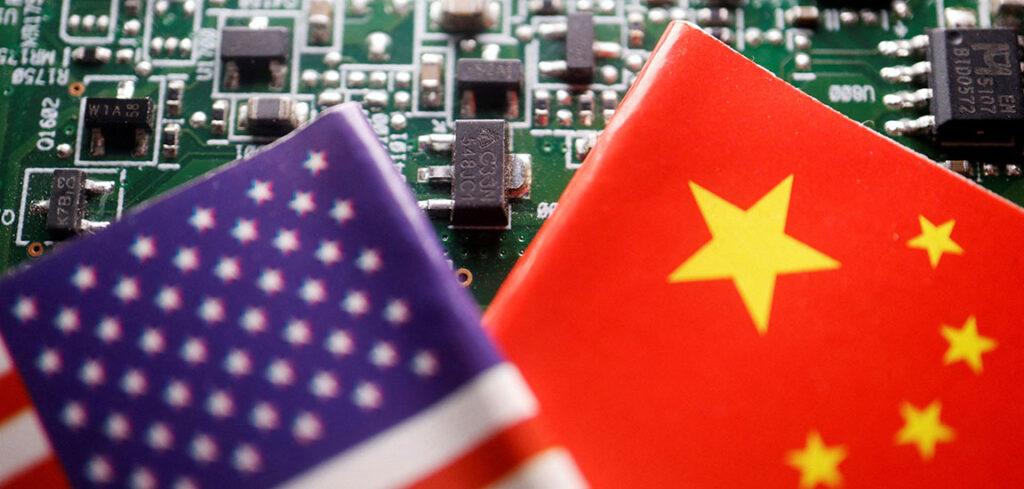The U.S. is considering curbs on the People’s Republic of China’s ability to import sophisticated AI models. REUTERS
REUTERS
The United States is poised to open a new front to safeguard U.S.-based artificial intelligence (AI) technology from the People’s Republic of China (PRC) and Russia. The Commerce Department is considering a new push to restrict the export of proprietary or closed-source AI models, which have training software and data that are kept under wraps, three people familiar with the matter said.
Any action would complement a series of measures over the last two years to block the export of sophisticated AI chips to China in an effort to slow Beijing’s development of the technology for military purposes. Even so, it will be hard for regulators to keep pace with the industry’s fast-moving developments. The U.S. Commerce Department declined to comment, while the Russian Embassy in Washington did not immediately respond to a request for comment. The Chinese Embassy described the move as a “typical act of economic coercion and unilateral bullying, which China firmly opposes.”
Currently, nothing is stopping U.S. technology giants like Microsoft and Google, which have developed some of the most powerful closed-source AI models, from selling them to almost anyone in the world without government oversight. Government and private sector researchers worry U.S. adversaries could use the models, which mine vast amounts of text and images to summarize information and generate content, to wage aggressive cyberattacks or even create potent biological weapons.
One of the sources said any new export control would likely target Iran, North Korea, the PRC and Russia. Microsoft said in a February report that it had tracked hacking groups affiliated with the PRC and North Korean governments as well as Russian military intelligence, and Iran’s Revolutionary Guard, as they tried to perfect hacking campaigns using large language models.
Computing power
To develop an export control on AI models, the sources said the U.S. may turn to a threshold contained in an AI executive order issued in October 2023 that is based on the amount of computing power it takes to train a model. When that level is reached, a developer must report its AI model development plans and provide test results to the Commerce Department.
That computing power threshold could become the basis for determining what AI models would be subject to export restrictions, according to two U.S. officials and another source briefed on the discussions. They declined to be named because details have not been made public. If used, it would likely only restrict the export of models that have yet to be released, since none is thought to have reached the threshold yet, though Google’s Gemini Ultra is seen as being close, according to EpochAI, a research institute tracking AI trends.
The agency is far from finalizing a rule proposal, the sources stressed. But the fact that such a move is under consideration shows the U.S. government is seeking to close gaps to thwart Beijing’s AI ambitions, despite serious challenges to imposing a muscular regulatory regime on the fast-evolving technology. As the U.S. looks at competition with the PRC and the dangers of sophisticated AI, AI models “are obviously one of the tools, one of the potential chokepoints that you need to think about here,” said Peter Harrell, a former National Security Council official. “Whether you can, in fact, practically speaking, turn it into an export-controllable chokepoint remains to be seen,” he added.
Bioweapons and cyberattacks?
The U.S. intelligence community, think tanks and academics are increasingly concerned about risks posed by foreign bad actors gaining access to advanced AI capabilities. Researchers at Gryphon Scientific and Rand Corp. noted that advanced AI models can provide information that could help create biological weapons.
The Department of Homeland Security said cyber actors would likely use AI to “develop new tools” to “enable larger-scale, faster, efficient, and more evasive cyberattacks” in its 2024 homeland threat assessment. “The potential explosion for [AI’s] use and exploitation is radical and we’re having actually a very hard time kind of following that,” Brian Holmes, an official at the Office of the Director of National Intelligence, said an export control gathering in March, flagging China’s advancement as a particular concern.
AI crackdown
To address these concerns, the U.S. has taken measures to stem the flow of U.S. AI chips and the tools to make them to China. It also proposed a rule to require U.S. cloud companies to tell the government when foreign customers use their services to train powerful AI models that could be used for cyberattacks.
But so far it hasn’t addressed the AI models themselves. Alan Estevez, who oversees U.S. export policy at the Department of Commerce, said in December that the agency was looking at options for regulating open-source large language model (LLM) exports before seeking industry feedback. Tim Fist, an AI policy expert at Washington, D.C.-based think tank CNAS, says the threshold “is a good temporary measure until we develop better methods of measuring the capabilities and risks of new models.”
Jamil Jaffer, a former White House and Justice Department official, said the U.S. should not use a computing power threshold but opt for a control based on the model’s capabilities and intended use. “Focusing on the national security risk rather than the technology thresholds is the better play, because it is more lasting and focused on the threat,” he said.

